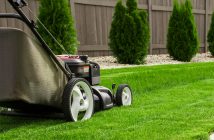It is estimated that 15 to 25 percent of people suffer from fall allergies. Fall allergies typically begin late in August and last until the first frost of the year. The immune system is designed to prevent foreign organisms from invading your body. However, allergies develop when the immune system overreacts to harmless substances. Allergies can cause sore throat, hoarse voice, stuffy nose and itchy eyes. One of the keys to overcoming fall allergies is to find out all you can about them.
Common Triggers
Weeds are one of the most common fall allergy triggers. The wind transports ragweed and it can trigger an allergic reaction every time that you are near it. There are 17 types of ragweed. Other types of weeds that can trigger allergic reaction include curly dock, golden rod and pigweed.
Mold, which is a type of fungus, can also trigger allergies. Mold can be found just about anywhere in your home and it can trigger allergy symptoms at any time. Mold is more likely to grow when the weather is warm. However, it does not start to get warm in many places until November. That is why mold can trigger allergies during the fall.
Why Allergies can be Misdiagnosed
Many people take time off from work and school because they mistake their allergies for a contagious illness. Fall allergies are often mistaken for the common cold. Other people think that they are allergic to something other than mold or ragweed. Keep in mind that while allergies are a nuisance, they are not contagious. You can still go to work or school if you have allergies as long as the symptoms are not severe.
How to Avoid Allergy Triggers
Avoiding allergy triggers is key to reducing your symptoms. If you know that you are allergic to weeds, then you will need to avoid going outside during the times that the pollen counts are at the highest (this is typically between the hours of 5 a.m. and 10 a.m.) It is also important to remember that pollen can stick to your clothes. If you have been outdoors, then you will need to take a shower as soon as you come indoors.
If you are allergic to mold, then you will need to take the steps that are necessary to reduce the moisture in your home. Spaces that are damp and warm easily accumulate mold. You can also reduce the humidity levels in your home low by using a dehumidifier. The ideal humidity level is between 40 and 50 percent. You may also want to consider buying a device to measure the humidity level. Furthermore, you will need to keep your doors and windows closed in order to prevent mold spores from entering your home. It is also a good idea to check the mold counts before you go outside.
Available Treatments
It may not be possible for you to completely avoid your allergens. However, there are some medications that you can take to reduce your symptoms including antihistamines, nasal steroids and decongestants. If you do not get relief from over-the-counter medication, then you will need to contact your healthcare provider. They can give you a prescription that is stronger than the over-the-counter medications.
In many cases, you have to use two or more medications in order to get optimal relief. If you know that you are prone to seasonal allergies, then it is a good idea to see your healthcare provider before the fall season begins.
Allergy shots can also be used as a preventative treatment. Allergy shots contain a small amount of the substance that triggers your allergic reaction; over time, your body builds up a tolerance to that substance, decreasing your allergy symptoms.
If you are still unable to overcome your allergy symptoms, see an allergist. An allergist is a medical doctor who specializes in treating allergies. You may not know exactly what you are allergic to and your allergist can determine the cause of your allergies and prescribe the proper treatment. Your allergist can also educate you on how to prevent your fall allergies from getting worse.








